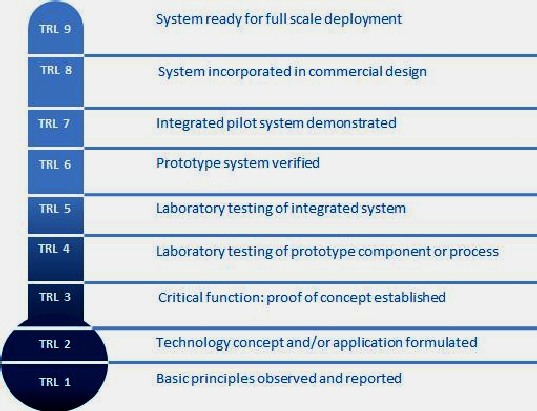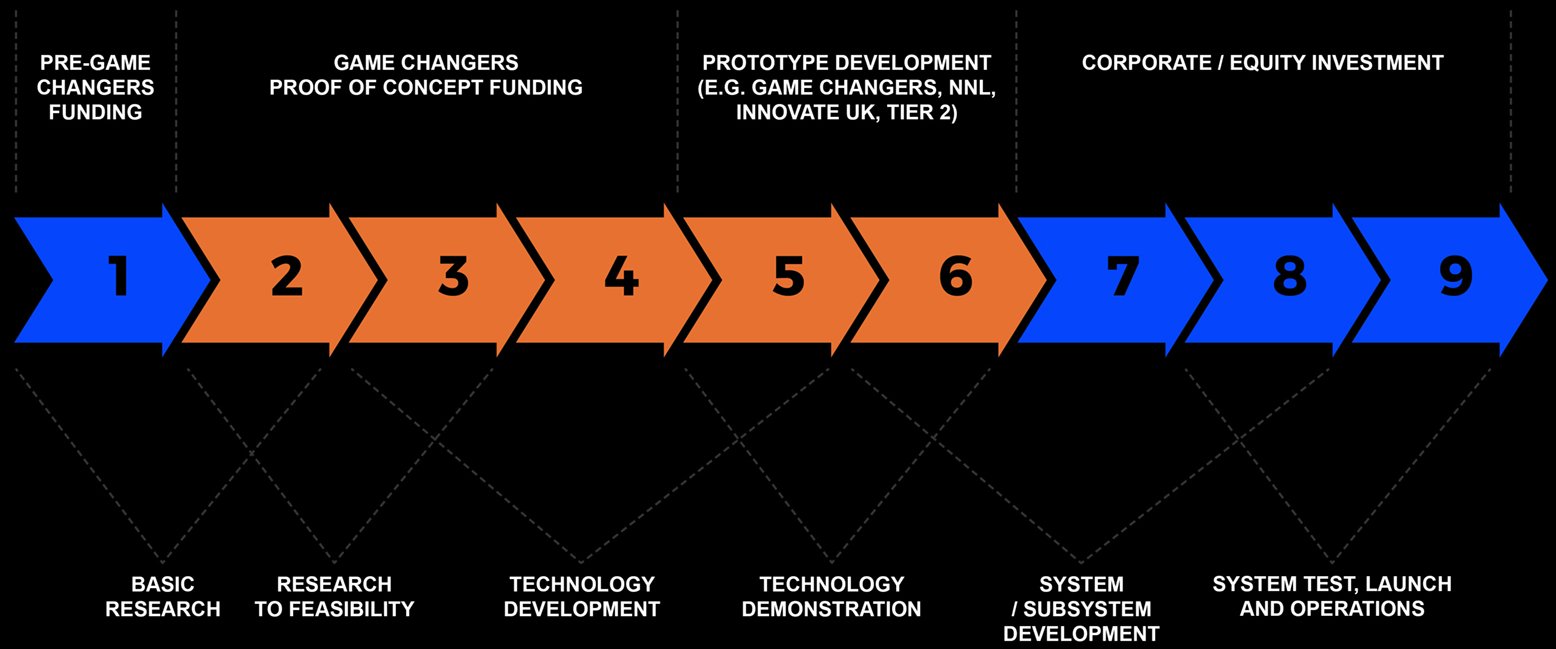|
TECHNOLOGY READINESS
Please use our A-Z to navigate this site or cruise HOME
TRL 1 - TRL 2 - TRL 3 - TRL 4 - TRL 5 - TRL 6 - TRL 7 - TRL 8 - TRL 9 - TRL 10
The TRL temperature chart
Technological advances give us the ability to better control our lives, those of other animals and flora and our understanding of planet earth in relation to the solar system and ultimately, the universe. Each technological advance gives us the potential building blocks for new products, processes or controls. During the Second World War technology advanced at a phenomenal rate in the search for weapons to annihilate potential enemies - leading to deployment of nuclear weapons at Hiroshima and Nagasaki. This technology that should never have been used against our fellow man. The importance of it being that when pushed and given the opportunity, man can progress in giant leaps. Even if such leaps have consequences that ought to have received more consideration as to long term impacts.
As new ideas are born investors such as stake holders and users such as our world leaders or commercial entities need to know at what level of development any concept is at so as to alter policies to allow for such use and to prepare existing entities for disruption to existing business models.
Two examples of this are the film world and cameras, and VHS tapes and DVDs. Cameras no longer use film to process images, making Kodak redundant. The film world embraced computer generated images and moved with the times (CGI), while film recordings sold to the public progressed from VHS tapes, to Digital Versatile Discs (DVDs). Crunch time is coming for internal combustion engines as we move to electric vehicles that are still not 100% fit for purpose without an effective infrastructure, and so the world moves on. Hence, Technology Readiness Levels, or TRLs became necessary.
TRLs were originally developed by NASA as a method of measuring the maturity of space exploration technology. A variety of different industries, including nuclear decommissioning, now use the same approach - though impossible to achieve safety long term, as companies and governments responsible for hundreds of thousands of years of maintenance cease to exist. But in robotic space exploration, reliability is critical, or a long-term mission fails. Politicians generally only think short-term. Scientists tend to think farther ahead.
HOW READY IN YOUR TECHNOLOGY ?
Technology readiness levels are a method of estimating technology maturity of Critical Technology Elements of a program during the acquisition process. They are determined during a Technology Readiness Assessment that examines program concepts, technology requirements, and demonstrated technology capabilities. TRL are based on a scale from 1 to 9 with 9 being the most mature technology. The use of TRLs enables consistent, uniform discussions of technical maturity across different types of technology.
TRL has been in widespread use at NASA since the 1980s where it was originally invented. In 1999 the US Department of Defense was advised by GAO to use the scale for procurement which it did from the early 2000s. By 2008 the scale was also in use at the European Space Agency as it is evidenced by their handbook. The European Commission advised EU-funded research and innovation projects to adopt the scale in 2010 which they did from 2014 in its Horizon 2020 program.
In 2013 TRL was further canonized by the ISO 16290:2013 standard. A comprehensive approach and discussion about TRLs has been published by the European Association of Research and Technology Organisations. Extensive criticism of the adoption of TRL scale by the European Union was published in The Innovation Journal, in that "concreteness and sophistication of the TRL scale gradually diminished as its usage spread outside its original context".
ELIZABETH SWANN
Specials, and one off custom builds come into a different category and a different approach to development is adopted, as most ships are bespoke. As are custom and show cars.
It is possible to break down smaller components of the whole, to use a TRL style approach, such as the folding wing system. But the hull, for example, is only subject to water tank testing and possibly Computational Fluid Dynamics (CFD) confirmation. Plus Computer Aided Design (CAD) stressing to calculate the frame and skin thickness. Then hull is then fabricated and launched with propulsion and controls, for fitting out. With some essential fitting out completed before launch.
Other components, such as pod thrusters will have been developed commercially by the manufacturer.
Vessels intended for series mass production, such as the SeaVax ocean cleaning drone fleets, may be tested more extensively than sea trials and a shakedown cruise. Especially the autonomous fleet navigation, filtration robotics, and litter transfer systems.
LINKS & REFERENCE
https
TRL 1 - TRL 2 - TRL 3 - TRL 4 - TRL 5 - TRL 6 - TRL 7 - TRL 8 - TRL 9 - TRL 10
Please use our A-Z to navigate this site or cruise HOME
This website is Copyright © 2023 Jameson Hunter Ltd
|

